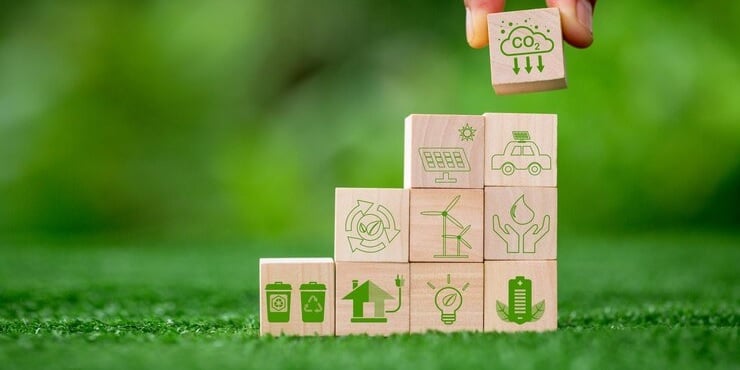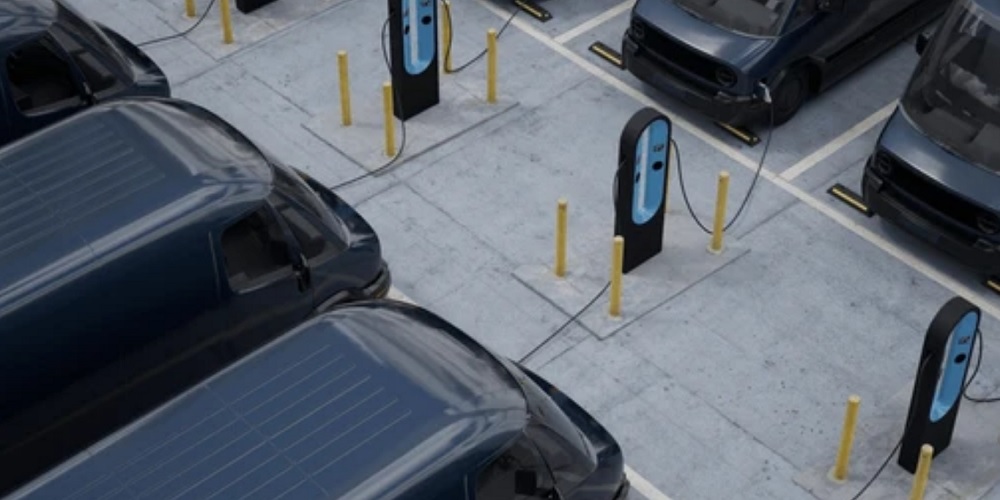Progressing government fleets to net-zero greenhouse gas emissions

Transportation accounts for the vast majority of CO2 emissions in North America. In fact, it makes up 29% of all greenhouse gas (GHG) emissions in the U.S. and roughly 25% of all GHG emissions in Canada.
Reducing this number by any significant degree will require the cumulative effort of all government organizations. In addition to North America’s involvement in the Net-Zero Government Initiative, state and local entities must transform their fleets for net-zero GHG emissions.
You can use this guide to build a net-zero plan for your evolving government fleet.
What it means to build a government fleet with net-zero greenhouse gas emissions
Over the last thirty years, more than 600 local governments in the United States have developed Climate Action Plans to reduce GHG emissions. However, just 45% of the U.S.’s largest cities have fully-formed reduction targets or baseline inventories.
Progressing government fleets to net zero requires a more robust plan. To build and sustain a net-zero government fleet, organizations must:
- Transition from traditional fuels to alternative energy sources. This includes moving to hydrogen, biodiesel, or similar fuels with renewable sources. ZEVs are the penultimate goal because they produce no tailpipe emissions.
- Modify driving habits and reduce range anxiety. The excessive driving of non-EVs can lead to unnecessary fuel use or idling times. Heavy breaking or improper care could also result in expensive, potentially unsustainable wear and tear.
- Install appropriate charging stations. Level 1, level 2, and DC fast chargers each have a role in a healthy charging ecosystem. Working with energy utilities in your local area may assist in the development of sustainable power sources.
- Consider carbon removals and offsets. These may include energy efficiency retrofits or focusing on renewable energy projects, such as solar EV charging panels. You may want to consider activities outside of fleet electrification, including optimizing waste operations.
Keep in mind that the net-zero GHG timeline that you develop will depend on your fleet size, vehicle types, and agency responsibilities.
Timeline suggestions for decarbonizing city and state fleets
Let’s assume that your organization wants to build a net-zero initiative around the migration date set by the Paris Climate Accord (2050). Here’s how to develop a bottom-up climate commitment to cut GHG emissions from your government fleet.
2020s
It would be wise to conduct a baseline GHG emission inventory to better understand the carbon liability of your fleet. Fleet telematics can help you do this quickly, unless you already have separate software in place.
Next, set an emission reduction target so you can establish the next steps for development timelines. You should make these decisions with stakeholders to better understand your goals, objectives, and challenges.
2030s
With a detailed timeline now firmly in place, it’s time to work on rightsizing your fleet. This includes replacing older vehicles with EVs to reduce unnecessary GHG emissions and maintenance costs.
In addition to telematics software, you can conduct fleet audits with various members of your team. Vehicles with high utilization ratios but low-efficiency rates are usually excellent candidates for replacement.
Next, install EV charging stations to prepare for the acquisitions. You can consider up-fitting parking garages or establishing legislation to construct EV-ready buildings.
2040s
You are near the finish line, which means it’s time to measure your progress. You should make this data available to the public to generate buy-in or prevent misinformation.
You may also need to develop better data models or acquire new software to fully estimate your changes. If baseline telematics doesn’t offer what you need, you can use cooperative contracts to find a more specialized fit.
Finally, focus on carbon removals and offsets (if you haven’t done so already). This includes renewable energy generation, route optimization, and driver training.
2050
You have reached the date of your net-zero target. It’s now time to assess the results of your plan. Even if you didn’t meet your target exactly, you should be relatively close to projected results.
Keep in mind that the net-zero fleet requires constant upkeep and maintenance. You must continue implementing this process to ensure a sustainable and cost-effective fleet.
Procurement solutions for greener government fleets
No matter what your timeline looks like for a net-zero government fleet, proper procurement is paramount for successful transformation. This includes turning to cooperative contracts, the most streamlined method of cost-effective, time-sensitive fleet procurement processes.
You can rely on Sourcewell to supply the resources needed to make more informed decisions about procurement, budgets, and timelines. Its competitively sourced cooperative contracts from national suppliers can assist with:
These are only a few of the benefits provided by Sourcewell’s cooperative contracts. Registering your organization online unlocks more turnkey solutions to support the transition of your government fleet.
The electrification of fleet vehicles can save city leaders and public fleet professionals money and time—and accelerate the progress to net-zero emissions in government fleets. Is your public fleet ready to transition to electric vehicles? See how Sourcewell can be a trusted partner in your EV journey.


